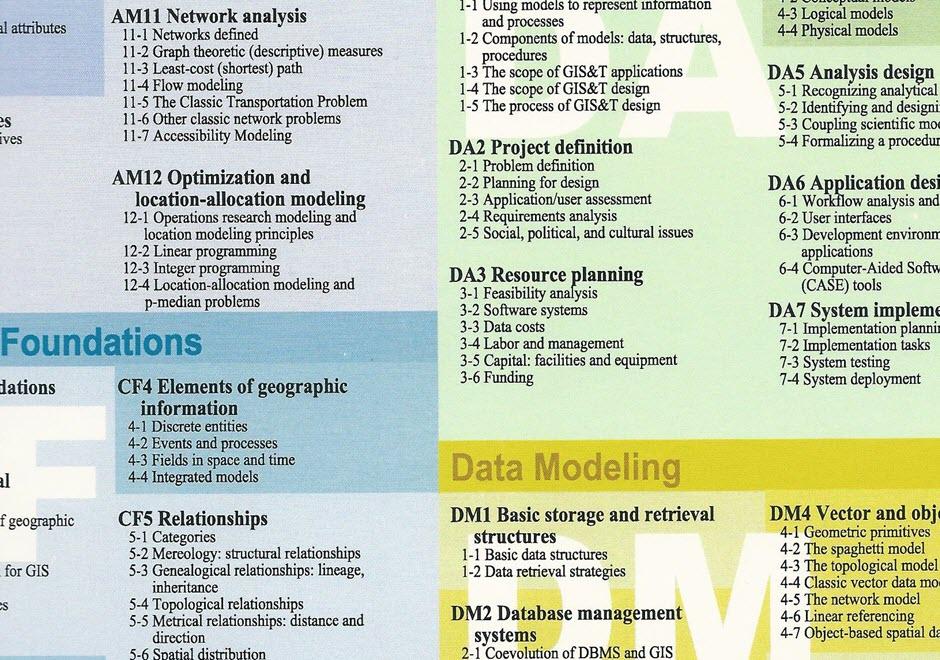AM-62 - Approaches to point, line, and area generalization

- Describe the basic forms of generalization used in applications in addition to cartography (e.g., selection, simplification)
- Explain why areal generalization is more difficult than line simplification
- Explain the logic of the Douglas-Poiker line simplification algorithm
- Explain the pitfalls of using data generalized for small scale display in a large scale application
- Design an experiment that allows one to evaluate the effect of traditional approaches of cartographic generalization on the quality of digital data sets created from analog originals
- Evaluate various line simplification algorithms by their usefulness in different applications
- Discuss the possible effects on topological integrity of generalizing data sets

AM-62 - Approaches to point, line, and area generalization